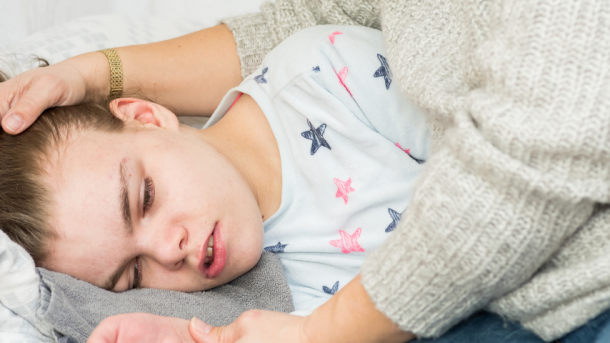One of the most feared events in education is when a student has a seizure. Most of us have heard the stories of the student who had a seizure in class, and we all know the stress and fear the incident brings. But what do you do when a student is having a seizure outside a class? How do you help and support them?
When your student has a seizure, it is important that you know what to do and what to expect. It may be difficult for the average person to identify and address the situation, so if teachers are provided with an Epilepsy First Aid Course, they could provide assistance to the affected student more systematically.
Seizures can be frightening and confusing, and the first thing you should know is that seizures are a warning sign of a serious medical problem. Seizures are part of a child’s normal development, and you should keep in mind that a seizure does not mean that your child has a serious medical problem.
A seizure is a sudden and involuntary disturbance in the nervous system caused by abnormal electrical activity in the brain. Seizures can happen for many reasons, including low blood sugar (hypoglycemia), a head injury, nutritional deficiencies, and other neurological diseases. In some cases, seizure episodes can be reduced with the help of a vagus nerve stimulation device or other medical aids, which can help rebalance the nervous system through micro electrical pulses.
Some children suffer from a condition known as febrile seizures, which is defined as a seizure that occurs in a child that is 3 months or younger. A child with a febrile seizure is also referred to as infantile convulsion or infantile absence seizures. Parents are usually told to take the child to the doctor immediately, but sometimes the symptom goes away on its own, and parents never receive a diagnosis.
When a child has a seizure, it can be a terrifying experience. And for parents, it is usually up to them to decide by themselves what to do in the first 24-48 hours after a seizure. How to handle the situation is a decision that is often based on one’s personal experience and the reactions of the medical staff they have worked within the past. When a child has a seizure, the first thing that should happen is you call 911. Within minutes, you should receive an ambulance and take your child to the nearest emergency room.
The first few days after a seizure are the most critical for the healthcare system. The results of this event can be devastating for the student and the family, and then an unknown period of time must pass before a recovery can occur. Yet, there is no set period of time that a seizure must last before recovery is possible.
Due to the increased sensitivity and inherent complexity of such cases, there have been many instances where the doctors and medical staff were unable to properly diagnose or treat the problem. Such incidents often get labelled as a medical malpractice. The events following this can be devastating and even fatal, because of which families may consider looking into the services of a Medical Malpractice Lawyer to sue for compensation. With this in mind, it is of utmost criticality that doctors do everything in their power to correctly diagnose and provide treatment for the problem.
Having a child who has a seizure is one of the most traumatic events a parent can experience. A seizure can be a terrifying experience, causing the student to lose consciousness and fall to the ground. However, it doesn’t have to be that way. You can help your child survive a seizure without harming him or her. By consulting a professional such as a neurologist, you can learn more about treatments and other solutions to reduce the symptoms of seizures. You can explore experts such as Dr Timothy Steel for advice and medications to decrease the frequency of seizure episodes.
While most students are pretty aware that they could have a seizure, there are still some who aren’t. For those that are, you want to watch out for the following seizures.
Atonic seizure: The muscle below the head starts to spasm, causing the person to fall or lose consciousness.
Epilepsy: This occurs when the electrical system in the brain fails to keep it properly regulated.
Myoclonic: These are small muscle jerks that appear all over the body. They are generally harmless but could increase the risk of a person losing consciousness.
In the event of a seizure, you want to provide enough support for the person to remain conscious and safe. This may include holding the person down, holding their arms, or keeping them from hurting themselves. As the first line of defense, it is important to check the person for a medical emergency. A seizure that lasts longer than 5 minutes usually results in the person losing consciousness, and this requires immediate attention. The person may be in danger of injuring themselves, so it is important to maintain their safety…
Seizures are more common among young children, but they can still happen at any age-even to adults. In fact, certain medications can trigger seizures in some people, students included. If you’re in charge of a child with a seizure disorder, it’s important to know what to do when your student has a seizure.




